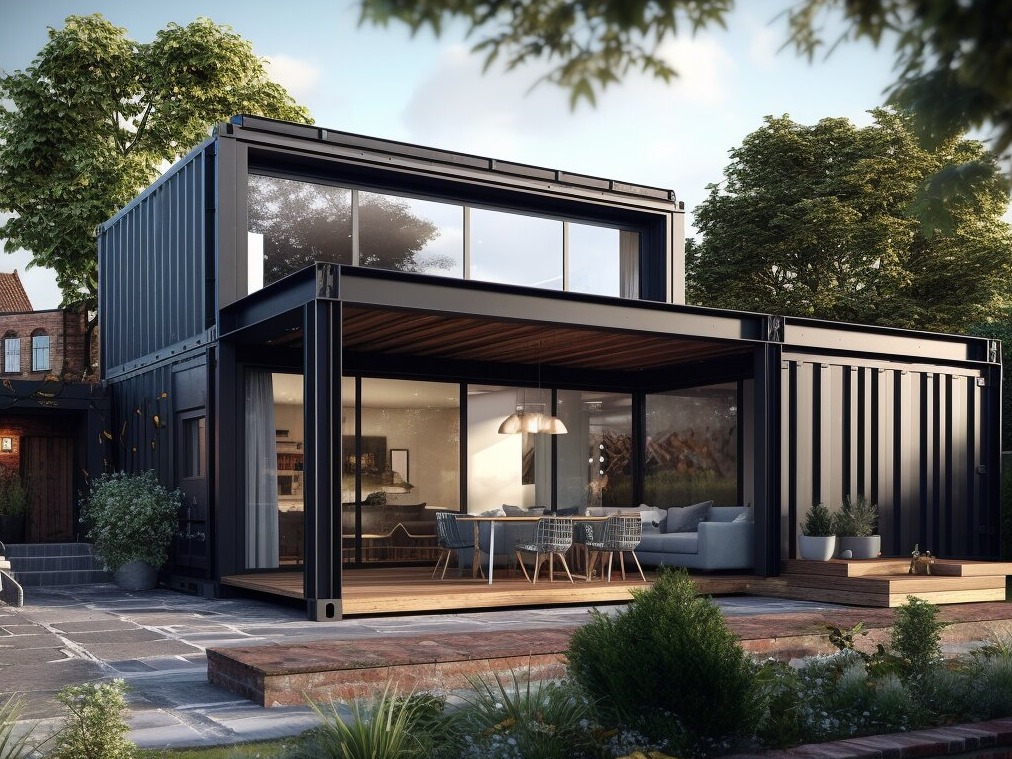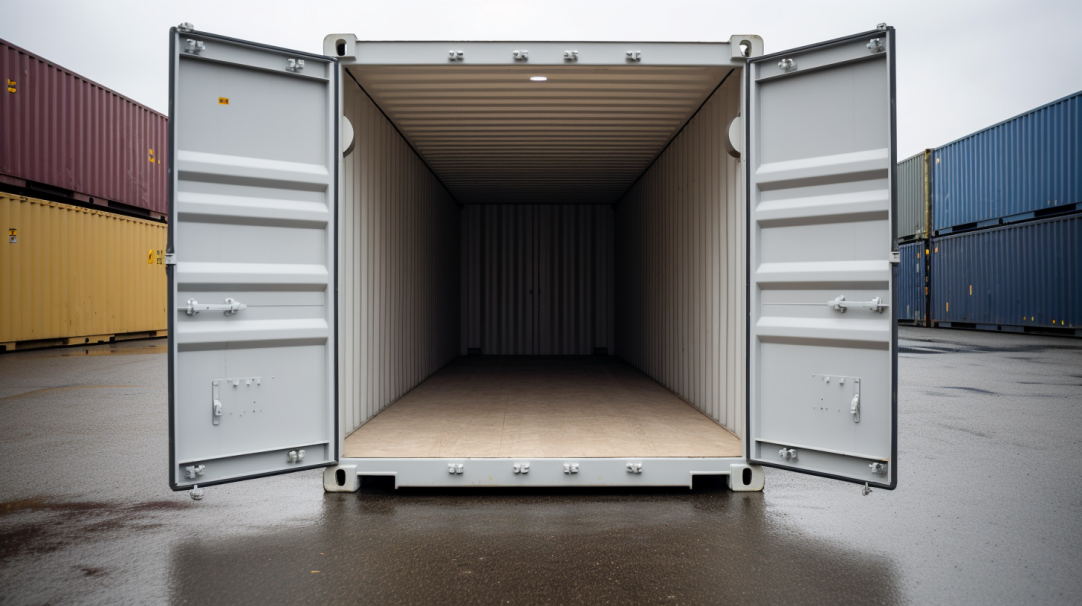Container home conversions are becoming a new trend in the UK, providing a cost-effective way of creating unique and quirky houses.
Not only are shipping containers inexpensive to renovate, they can be converted quickly, they’re eco-friendly, and they deliver stunning results. Plus, with so many unused units taking up valuable space these days, they’re more affordable than ever to buy.
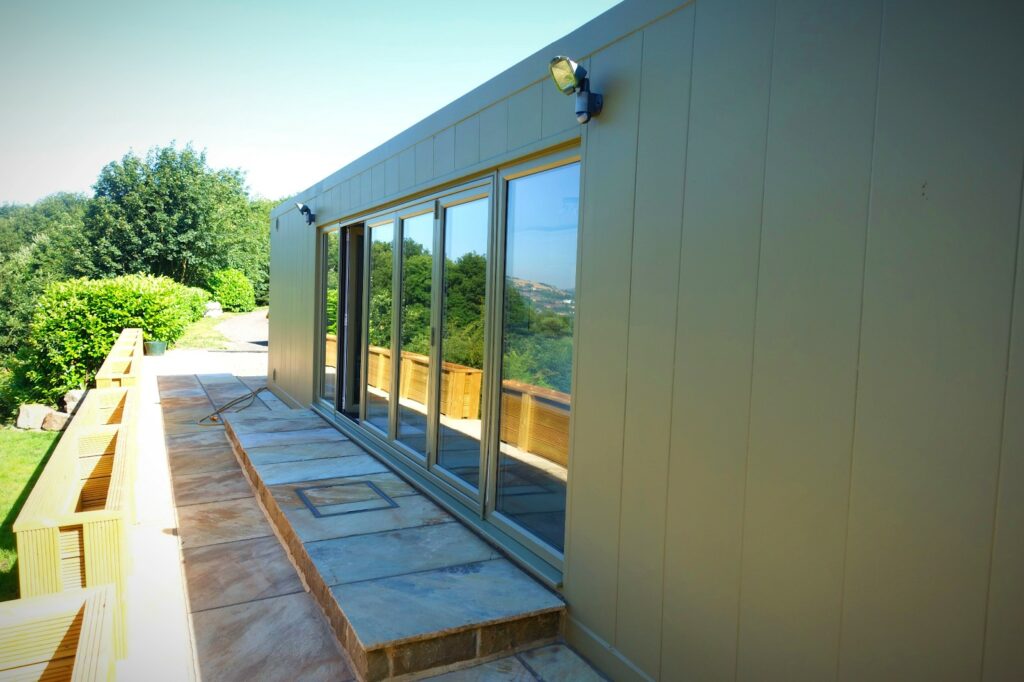
Advantages and Disadvantages of Converting Shipping Containers Into Homes
Container home conversions are a huge undertaking, so it’s important to consider the advantages and disadvantages before you go ahead.
Advantages of container homes
They’re cheaper than building a conventional house
Because the main structure of the home is already in place, you won’t need to buy as many building materials. This means converting shipping containers into homes can be incredibly cost-effective.
On average, the cost of converting a 20-foot shipping container ranges from £10,000–£25,000. For a larger project involving multiple containers or a high-end finish, it could cost between £50,000 and £100,000, or possibly more. However, this is still substantially less than the cost of constructing a conventional house.
They can be put on just about any piece of land
Converted shipping container homes are popular for their high flexibility. They can be placed in various locations according to your preference, whether that’s an urban area, the countryside or a holiday spot. Additionally, if you decide you need a change of scenery, these homes are easy to move.
However, before setting up your container home, always consult with your local council to ensure that you’re in compliance with all the regulations.
Considering placing a shipping container on your property?
Before you do, learn everything you need to know, from planning permissions to understanding the costs involved in our guide.
Learn moreThey’re sustainable
Not only does recycling an old shipping container reduce waste, if they’re well-insulated, these small spaces are efficient to heat as well. This means you’re using less energy, and doing your part for the planet too.
They’re durable & weather resistant
A shipping container converted into a home offers notable durability. Originally designed for transporting heavy cargo across seas and withstanding harsh environmental conditions, these containers can provide a sturdy, weather-resistant, and long-lasting housing solution.
They have a fast construction time
There’s a ready supply of old containers that are no longer being used to ship goods overseas, so you should be able to find one relatively quickly. Plus, because the walls and roof are already in place, the conversion time is significantly less than building a home from scratch.
They provide great design flexibility
Thanks to its versatility to create an unusual and boldly designed home, your new container home conversion will already stand out from regular houses. You can stack and rearrange the units to determine the size and shape of your home.
Plus, you can add windows, doors, partitions, terraces and other creative features to create a unique living space, as well as paint it in a design or colour that suits your personality and preferences – if local regulations allow it.
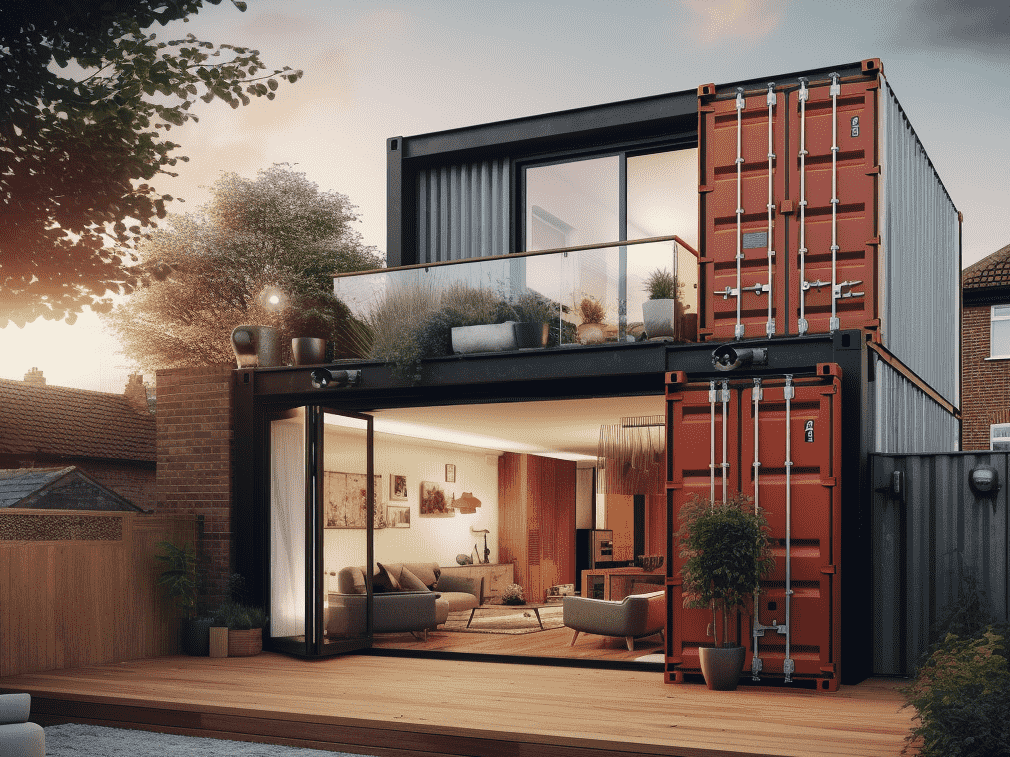
Disadvantages of container homes
Metal is a good thermal conductor
Because they’re made out of steel, shipping container homes can be quite responsive to temperature changes, often becoming uncomfortably hot in the summer and chilly in the winter. However, adequate insulation and ventilation can combat this problem.
Second hand containers can be damaged
If you’re buying an older container, you can expect a certain amount of rust, so you’ll need to strip and treat it before the conversion begins. Also be wary of any structural problems resulting from twisted or damaged units.
They can be painted with toxic paints
In order to withstand harsh conditions during transport and storage, some older shipping containers might have been coated with lead paint, and the floors could have been treated with chemicals. You might have to remove these with sandblasting before your conversion begins.
Their structural stability can be compromised
The process of cutting a container to add windows and doors can compromise its structural integrity. If this is the case, you may need an engineer’s report from your local council to confirm the shipping container is safe to live in, especially if you stack one on top of another.
Choosing the Right Shipping Container to Convert
A shipping container turned into a home can be a beautiful place to live. However, it’s vital to choose the right size, condition and type of container if you want your conversion to be a success.
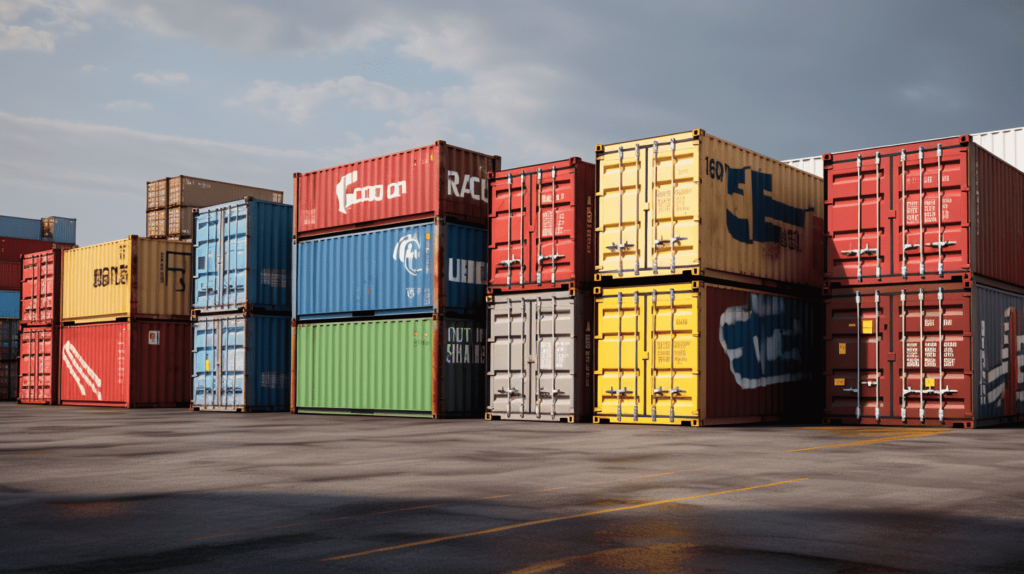
Make sure you see the container you’re buying
There are several important factors to consider when selecting your unit, so always try and look at the shipping container before you make a purchase.
The condition of the shipping container
As well as inspecting the container for aesthetic damage such as dents, rust and holes, look for signs of corrosion or weak spots in the walls, roof and floor, as they can impact the structural viability.
Type of shipping container
Most standard shipping containers are steel with corrugated walls. However, you could consider using other types of units, such as:
- Open Top Containers – They don’t have a solid roof. Instead, they’re covered with removable tarps. This type allows for the incorporation of unique architectural elements, such as a glass ceiling for extra light.
- Open Side Containers – These have doors along the long side of the container. They can be beneficial for creating larger open spaces or patios.
- Refrigerated Containers – Also known as “reefers,” these containers are insulated to keep goods at a consistent temperature. While more expensive, they can be beneficial for building in areas with extreme climates because of their additional insulation.
Interested in learning about the different types of shipping containers and their uses?
Discover the various styles available, from standard containers to specialised units like refrigerated and open-top models. Each type serves unique purposes for storage, transportation, or innovative building projects.
Check out our in-depth guide to find out more and choose the right container for your needs.
Read guideHow old the shipping container is
Shipping containers generally last around 10–12 years before they start to rust and corrode, so the age of a container will have a big impact on its appearance and quality.
Advantages of buying a new shipping container
If you buy a new shipping container, it’s guaranteed to be straight, whereas older ones can sometimes be bent or twisted, which can influence their structural stability. This is very important if you’re planning on stacking or lining them up.
New shipping containers are also free from any rust or corrosion, so you have less costly and time-consuming preparation work to complete.
Advantages of buying a second hand shipping container
The main advantage of buying a used shipping container is the price, as they are significantly cheaper. A new 20-foot container can cost £2,500–£3,000, but prices for second hand 20ft containers can start from just over £1,000.
There’s generally a surplus of second hand containers, so you should be able to buy one and have it delivered pretty quickly.
Ready to find a shipping container that matches your needs?
Explore our diverse collection of new and used containers, sure to meet every requirement!
Buy a shipping containerPlanning the Shipping Container Conversion
Planning is the most vital step in the conversion process if you want to create a safe and comfortable home. Start with a design (even if it’s rough at this stage), set yourself a budget, and research the planning regulations in the local area before you begin.
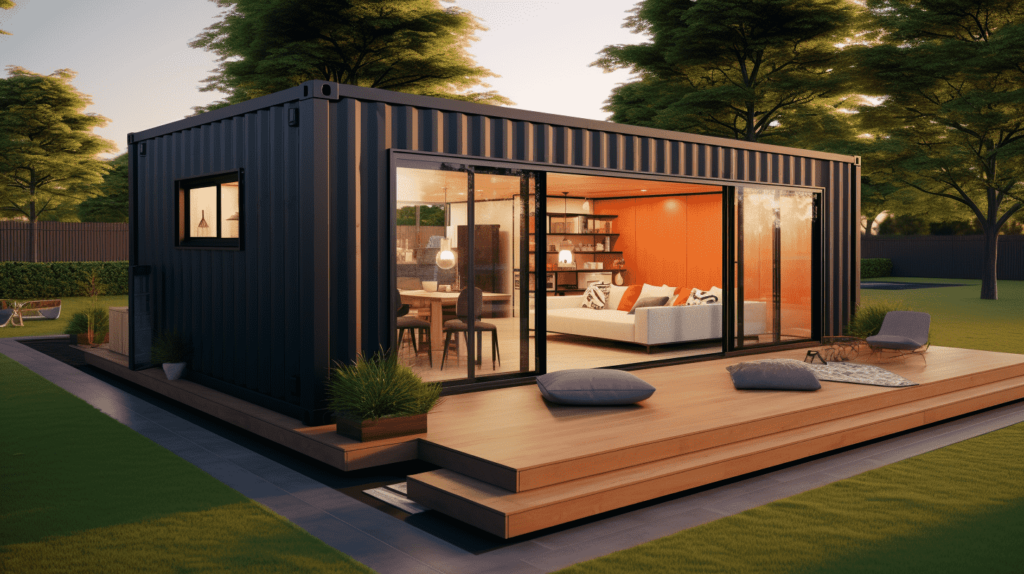
Finding the right architect
Hiring the services of an architect can be the difference between a successful, functional and stunning home, and a place you’d rather not live in. Particularly consider hiring one with experience in container home conversions as they can offer unique insights that help you make the most of the space. If you choose to hire an architect, it’s a good idea to get them on board as early as possible.
Insulating a Shipping Container Home
Because shipping containers are made of steel, they can easily become too hot or cold depending on the climate, so good insulation is vital.
Whether you choose to insulate your shipping container internally or externally, make sure it’s covering all the contours of the metal to prevent condensation from creeping in, and install a vapour barrier to the warm side of the insulation. Take a look at our damp and condensation sticks to get started.
Blanket insulation
Blanket insulation is the most common type used in homes, and it can also be used on your shipping container. But make sure it doesn’t contain fibreglass as it can pose health risks if you’re close to it.
Natural insulation
Materials such as cotton, wood or cork can be used as insulation. They’re especially popular with people living a self-sufficient and sustainable lifestyle due to the fact that they’re environmentally friendly and kinder to the planet.
Spray foam
Spray foam is one of the most common forms of insulation as it is highly effective. It’s used in many shipping container homes as it creates a perfect layer of insulation. However, it can be a more expensive solution.
Insulation boards
These thin boards are very efficient, and they hardly take up any space. This can be an attractive solution for smaller shipping containers with limited space.
Plumbing a Shipping Container Home
Plumbing your container home can be tricky if you’re inexperienced, so consider hiring a shipping container conversion expert to complete this part of the process for you. You might even be able to buy a container with plumbing already built in.
Installing Electricity in a Shipping Container Home
As with plumbing, installing electricity can be incredibly complicated, it can also be very dangerous. Again, you could ask a shipping container conversion expert to complete this important step for you.
Conventional mains power
If you plan on placing your container home within an established community, you can probably access power via the electrical grid. The final connection must be completed by a certified electrician, then surveyed by the electric company to ensure it’s safe and compliant.
Alternative power sources
Solar, wind and hydro-electric power are cost-effective and environmentally friendly ways to create electricity for your converted shipping container home. These renewable energy systems not only help to reduce your utility bills, but also contribute to lessening environmental impact by reducing reliance on fossil fuels.
Hydro-electric
Hydro-electric power is created by running water, so it could work well if you live next to a fast-flowing river or stream.
Solar
Although solar power can be effective, we don’t always get enough sun in the UK to power a home consistently. So, if you’re choosing this option, look into solar power storage options, and consider using it alongside other power sources.
Wind power
Wind power is a popular option, and works by installing wind turbines on or near the container home. However, it isn’t suitable for all locations and will depend on the climate, geography and local regulations.
Cost of Converting a Shipping Container Into a Home
There are many costs involved in converting a shipping container into a home, some of which you might not have considered. Take your time to think about what is achievable within your budget, and plan the project accordingly.
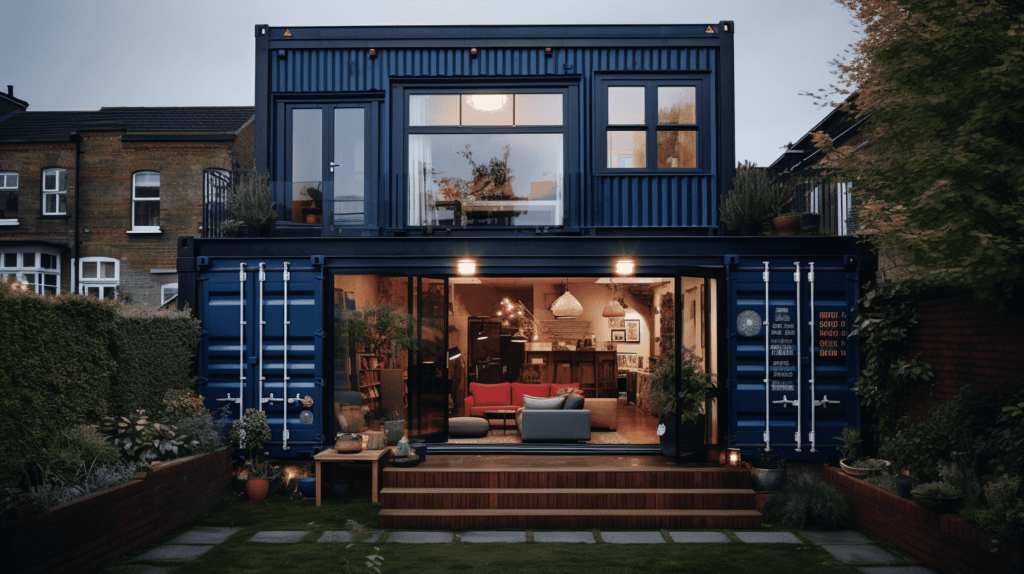
Alternatively, we can create your very own custom-built shipping container home which removes any worries about unexpected or mounting expenses.
Are container houses really cheaper to build?
A container turned into a home can certainly be a cheaper option than building a house because the main structural framework is already in place. However, there are several other costs you should take time to consider.
The cost of the container
Depending on the size, containers can range from less than £1,000 for a smaller used unit, to around £5,500 for a larger new unit. If you’re planning on creating a sizable home using several containers, these costs can add up.
Curious about the price ranges of different shipping containers?
Understanding the costs can help you make informed decisions, whether you’re purchasing for shipping, storage, or conversion. Factors such as size and condition can significantly influence the price of shipping containers.
Delve into our extensive pricing guide to gain insights on the expected costs involved in purchasing a shipping container!
Read guideModification costs
Although the main structure is already intact, expenses for additional features such as windows, doors, interior dividing walls, and outdoor areas can all add up. It’s important to consider these costs in your budget planning before starting the project.
Labour costs
Various aspects of the project such as welding, plumbing, architectural designing, and electrical work could be expensive. These costs can rise especially if you don’t have the required skills to perform these tasks yourself, or if you don’t have contacts in these industries who can provide services at a discounted rate.
Permits and zoning
Depending on where you want to keep your converted shipping container home, and the complexity of the project, you might need to obtain permits or planning permission for your new container home, and this can impact the overall cost.
Issues with Container Homes You May Not Have Considered
There are a few potential issues to be mindful of before you convert your shipping container into a home.
Reinforcing the structure
If you cut any holes for windows or doors, the container might lose its structural integrity, and will need to be reinforced – preferably by a structural engineer.
Room sizes
A 20ft container provides roughly 160 square feet of living space, and a 40ft container will give you around 320 square feet. Because of the small size, you might need to prioritise which rooms are most important, and be creative with the space that’s available.
Hiring a builder experienced in container construction
If you’re not familiar with construction, you’ll ideally need to hire a builder with expertise in converting shipping containers into homes. They can offer a unique insight into the challenges and opportunities these types of projects present, but keep in mind that these experts could be difficult to find.
Removing chemicals
Shipping containers used to be constructed specifically to transport goods overseas. As such, they are sometimes coated with chemicals that make them resistant to the elements, such as chromate, prosperous and lead paints. If this applies to your unit, you’ll need to sandblast the surfaces to ensure the chemicals are fully removed.
Weatherproofing joints
If you intend to stack the containers on top of each other or position them side by side, it’s important to ensure the points of connection are weatherproofed. This means protecting these joining areas from exposure to elements like rain, snow, or wind to prevent water intrusion and potential damage.
Conclusion
Converting a shipping container into a quirky and comfortable home presents many challenges, and you’ll need to plan thoroughly before taking on such a significant project.
However, provided you keep the risks, considerations and costs in mind, it could provide an ideal way of creating a unique living space on a relatively low budget, and the results can be incredibly rewarding.
Looking for a completely custom solution?
We have a wide range of base containers that can be customised to your needs, however we
realise
that
sometimes you need something completely ‘Outside the box’.
Contact us and one of our experts will be in touch to help design the container of your
dreams


